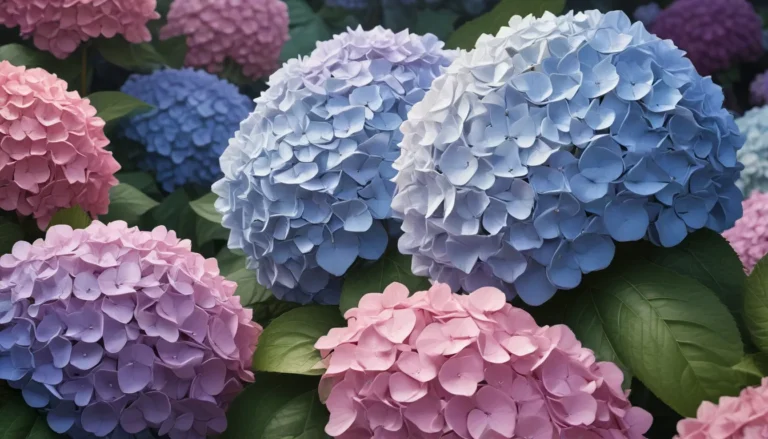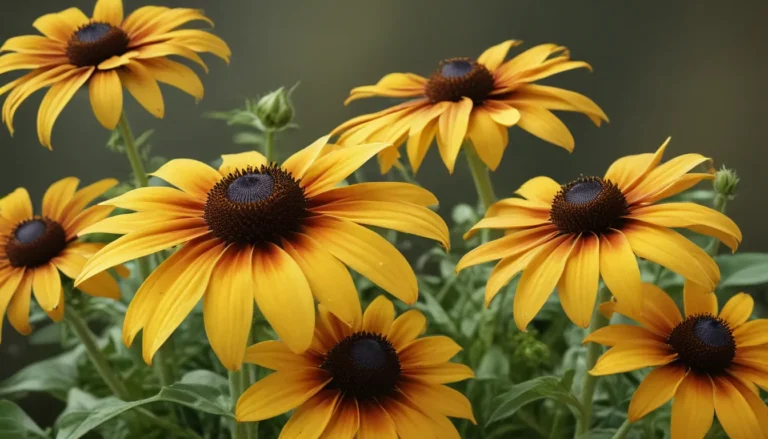The pictures we use in our articles might not show exactly what the words say. We choose these pictures to make you interested in reading more. The pictures work together with the words but don’t take their place. The words still tell you the important facts.
Welcome to the captivating world of Portulaca, a versatile and resilient plant that has captured the hearts of garden enthusiasts and health-conscious individuals alike. From its vibrant blooms to its rich history and unique characteristics, Portulaca, also known as Purslane, offers a plethora of intriguing facts waiting to be discovered. Join us on a journey as we explore the wonders of this remarkable plant and uncover its hidden secrets!
The Allure of Portulaca
Portulaca, a flowering plant belonging to the Portulacaceae family, is renowned for its ability to thrive in hot and dry environments. With over 100 species to its name, the most common being Portulaca oleracea, this plant boasts vibrant flowers in shades of pink, red, orange, yellow, and white, attracting pollinators such as bees and butterflies. Its succulent leaves, known for their water-retaining properties, enable Portulaca to withstand drought conditions with ease, making it a popular choice for gardens and landscapes.
A Plant of Many Talents
Portulaca's versatility extends beyond its beauty. Not only is it edible, with leaves, stems, and flower buds that offer a tangy and lemony flavor, but it also boasts a range of health benefits. Rich in nutrients such as omega-3 fatty acids, vitamins A, C, and E, as well as minerals like magnesium and potassium, Portulaca has been used in traditional medicine to treat various ailments, from skin conditions to respiratory problems. Its adaptability to different climates and low maintenance requirements make it a favorite among gardeners looking to add color and resilience to their outdoor spaces.
Portulaca in the Wild and in Cultivation
Portulaca's self-seeding nature and ability to attract beneficial insects like bees and butterflies make it an environmentally friendly choice for gardens. Resilient to common plant diseases and pests, this plant's shallow root system and spreading habit ensure its survival in challenging conditions. Often referred to as the "ten o'clock flower" for its unique blooming patterns, Portulaca adds a touch of intrigue to any landscape. Whether used in rock gardens, xeriscaping projects, or even vertical gardens, Portulaca's adaptability and beauty shine through.
Delving into the Mystique of Portulaca
As we unravel the mysteries of Portulaca, we discover its fascinating role in nature and human culture. From its historical significance in ancient folklore to its references in literature and art, Portulaca has left a lasting impression throughout the ages. Its ability to colonize new habitats through self-seeding and its suitability for innovative gardening techniques illustrate the plant's adaptability and charm. As you encounter Portulaca in your outdoor adventures, take a moment to appreciate its beauty and remember the intriguing facts that make this plant truly exceptional.
FAQs: Your Guide to All Things Portulaca
- What are some common varieties of Portulaca?
-
Portulaca grandiflora (moss rose) and Portulaca oleracea (common purslane) are popular cultivars known for their vibrant colors and edible properties.
-
How do you care for Portulaca plants?
-
Portulaca thrives in full sun and well-drained soil, requiring minimal watering due to its drought-tolerant nature. Avoid overwatering to prevent root rot.
-
Can Portulaca be grown indoors?
-
While primarily an outdoor plant, Portulaca can be cultivated indoors in a sunny, well-ventilated location. Ensure well-drained soil and minimal watering to prevent moisture-related issues.
-
Are there any health benefits associated with Portulaca?
-
Portulaca is rich in omega-3 fatty acids, antioxidants, and essential vitamins and minerals, known for their anti-inflammatory properties and potential benefits for heart health and immunity.
-
Is Portulaca edible?
- Yes, Portulaca is edible, with its leaves, stems, and flower buds used in various culinary dishes. Ensure organic cultivation to avoid exposure to harmful chemicals.
Embrace the Splendor of Portulaca
In conclusion, Portulaca stands as a symbol of resilience, beauty, and versatility in the botanical world. Whether adorning gardens or offering health benefits, this plant continues to captivate individuals around the globe. As you delve into the realm of Portulaca, remember its rich history, nutritional benefits, and intriguing characteristics that make it a truly remarkable addition to any outdoor space. With each bloom and each leaf, Portulaca tells a story of endurance and elegance that is sure to inspire awe and admiration.
Embark on a Journey of Discovery with Portulaca
Join us in exploring the wonders of Portulaca, a plant that embodies the essence of nature's beauty and resilience. From its vibrant blooms to its medicinal properties, there is much to learn and appreciate about this remarkable plant. As you cultivate your own Portulaca garden or simply admire its beauty in the wild, remember the rich history and intriguing facts that make Portulaca a true marvel of the natural world. Let Portulaca be your guide to a world of wonder and enchantment, where each petal and leaf holds a story waiting to be told.






